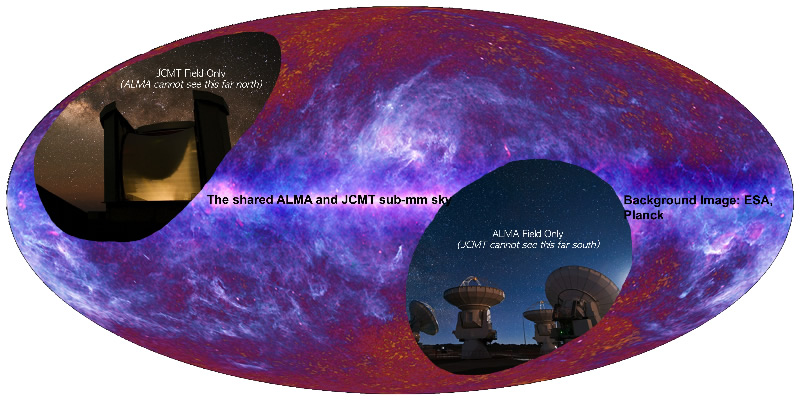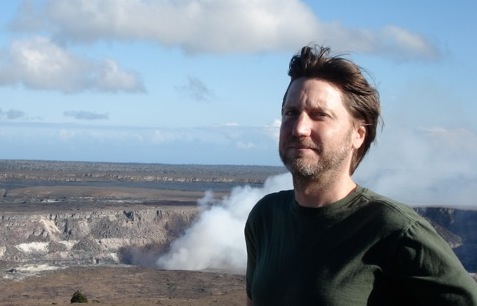A JCMT Update
Doug Johnstone
Aloha from the Joint Astronomy Centre (JAC) in Hilo, Hawaii. Although I have only been in post as Associate Director at the James Clark Maxwell Telescope (JCMT) for just over a month I have been very fortunate to be surrounded by an extremely capable staff, and thus have managed to hit the ground running as we continue efforts toward maximizing the scientific impact of the telescope over the next twenty odd months.
Those of you who have visited the JCMT recently, or have close connections to the telescope, are aware that a number of staff have departed over the last six months. I am pleased to report that we have filled the most important vacancies with capable individuals and have managed to retain, at least in part, access to the knowledge residing in key individuals that have otherwise moved on. More importantly, the entire JCMT staff continue to work diligently on all of our behalf supporting PI and Legacy Survey observers, maintaining and characterizing the critical instruments, and testing, debugging, and advancing the data reduction techniques, especially for the SCUBA-2 map-maker. If you are headed to Hawaii to observe at the JCMT or another telescope, please consider stopping by the JAC in Hilo for a few days to interact with the staff. For those with specific research connections there may even be some funds available for such a visit (drop me or the staff an email).
As you are likely aware, the observing time at the JCMT is split 65/35 between the JCMT Legacy Survey (JLS) and PI projects. The results of the 13A time allocation process should have been forwarded by now to all those that submitted proposals and I am pleased to note that the Canadian PI time remained heavily oversubscribed (8.0 in 12B and 4.0 in 13A). We look forward to having SCUBA-2, HARP, and receivers W and A available this next semester (receiver A is completing a modification which will allow the JCMT to partake in VLBI observations). Furthermore, the Canadian ancillary instruments for SCUBA-2, POL-2 and FTS-2, should complete commissioning in 13A. Both these instruments received Canadian PI interest for shared risk observing during the upcoming semester.
Looking forward to semester 13B, it is worth noting that this will be the last full autumn semester under the current partnership. Together with members of the time allocation committees, we are considering if any changes to the Call for Proposals or the proposal ranking process should take place given this special circumstance. If you have specific suggestions, we would be happy to hear from you. Most importantly, if there is an observation in the autumn sky that you are keen to observe, 13B is the time to propose!
SCUBA-2 remains the workhorse instrument at the JCMT and has been performing well. In an effort to further improve the sensitivity of the instrument, a tiger-team has been set up and is looking at the technical issues in detail. Many of you also know that SCUBA-2 was warmed up at the end of October, just as I arrived (but completely coincidental). The maintenance performed was deemed critical to keep SCUBA-2 in functioning order through the end of September 2014. Despite a slight hiccup when the instrument was put back into use, SCUBA-2 is now cold and has been taking data during the latest run of excellent Grade 1 weather.
For those daunted by the prospect of reducing SCUBA-2 observations, a data reduction cookbook has been written by Holly Thomas and can be found on the JCMT web-page (http://www.starlink.ac.uk/docs/sc21.htx/sc21.html). As well, three research papers have been written describing SCUBA-2 and are now with the referees. Holland et al. describes the instrument, Chapin et al. describes the map-maker, and Dempsey et al. describes the calibration technique and uncertainties. Links to these papers will appear on the JCMT web-page once they are accepted.
The JCMT Legacy Surveys are now well underway, although some have had greater weather success than others. A Cosmology Legacy Survey paper using SCUBA-2 data is available on Astro-ph (http://arxiv.org/abs/1211.6668) and first-look papers are being prepared by a number of survey teams. For detailed information take a read through the JCMT Newsletter, which should be available on the JCMT web-page in early January.
The JCMT science archive resides at the CADC (NRC Victoria) and continues to be heavily utilized for both raw SCUBA-2 data and older, reduced, SCUBA observations. I am actively working with the CADC and the Legacy Survey teams to define the JCMT Legacy Products that should last well beyond the end of the current telescope partnership. Both the SCUBA-2 and HARP data reduction pipelines continue to be refined, and older, pre-ACSIS, heterodyne observations are being prepared for ingestion into the archive to add to the legacy of the JCMT.
 |
Figure 1 - Schematic showing that 65% of the sky is observable jointly by the JCMT and ALMA. |
The future of the JCMT remains uncertain as the Director of the JAC, Gary Davis, outlined in the September 2012 edition of this newsletter. We are actively promoting the importance of the JCMT beyond September 2014 and will continue to do so next year. I took a poster on the importance of the JCMT in an ALMA World to the ALMA First Results meeting in Chile which can easily be modified by others looking to 'sell' JCMT science opportunities (http://www.astro.uvic.ca/~johnston/JCMT/). I have also been invited to give a talk on the specific use of the JCMT for circumstellar disk and planetary science at the April `Transformational Science with ALMA: From Dust to Rocks to Planets Formation and Evolution of Planetary Systems' meeting, being run by the North American ALMA Science Center. We are of course eager to work with any members of the community who would like to promote the telescope. Detailed information about the future possibilities beyond the present partnership will be available in the JCMT Prospectus, which Gary Davis expects to have completed by the end of March 2013. By that time we should also have learned a great deal from UKIRT, which is undergoing the same process for new ownership a full year ahead of the JCMT.
Finally, on an extremely positive note, 2012 looks to have been another excellent, and likely record-breaking, year for JCMT publications (see http://www.jach.hawaii.edu/JCMT/publications/references/pubs-2012.html for publications and statistics through September 2012). Many of the papers are still focusing on legacy SCUBA observations, reiterating the critical importance of a comprehensive and navigable archive! We look forward to an increasing number of SCUBA-2 publications in 2013, both from the legacy teams and individual PIs. Thus, the near term science impact of the JCMT continues to look impressive.
 |
For more information, please contact Doug Johnstone (d.johnstone@jach.hawaii.edu). |
Figure 2 - Doug at Volcano National Park in Hawaii (photo credit: Jim Hoge) |